Underwater drones, automated feeders and other high-tech tools give a glimpse into the future of fish farming
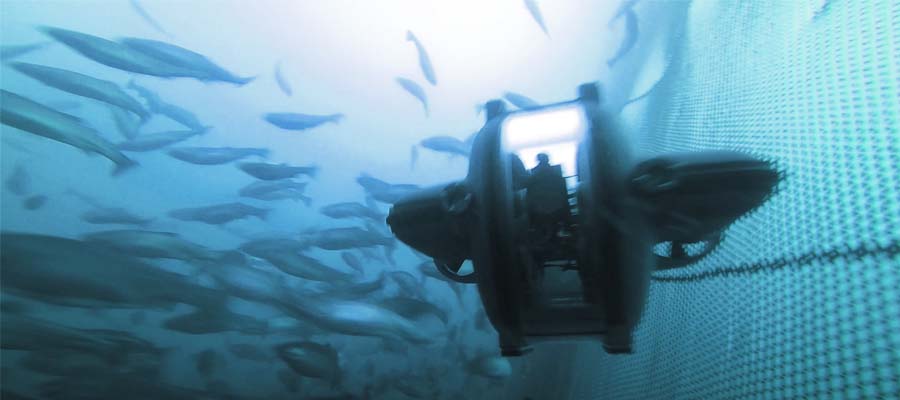
As it turns out, a robot takeover may not be such a bad thing after all.
Recent technological advances aren’t just unleashing newfangled apps and iPhones – they’re gradually revolutionizing the aquaculture industry. From airborne inspection tools to underwater drones, innovative robotics and automation technology are unveiling a brave new world of “futuristic farming” – and the uptake is spreading to every corner of the earth.
In Ontario, Canada, Deep Trekker Inc. is modernizing fish farm operations with their portable underwater inspection tools. Their premier product is the DTX2 ROV – an underwater remotely operated vehicle (ROVs) that’s hand-held, battery-powered and widely used by aquaculture companies internationally.
“It’s like a big Gameboy,” said Amanda Coulas, Deep Trekker’s marketing manager. “It’s about the size of a basketball, [with] a camera inside connected to a controller that you hold in your hands. The live feed is displayed on the integrated screen.”
The ROVs have add-ons specially designed for the aquaculture industry, such as a mort (mortalities or dead fish) retrieval system, side-facing cameras that scan for holes in net pens and “grabbers” that can collect sediment and water samples to aid with environmental monitoring. For Deep Trekker’s clients, these gizmos are streamlining farming practices.
“Deep Trekker ROVs make it simple for farm operators to complete inspections anytime without cumbersome generators, additional boxes, or long set-up times,” said Coulas. “Within 30 seconds, site managers can have eyes underwater. This provides instant information [on] fish health, schooling patterns, feeding habits, etc.”
Autonomy and remote control options in auxiliary tools – like ROVs, vessel control and cage-integrated intervention tools – will expand the time window for operations in exposed locations.
For Kana Upton, biologist at Aqua-Cage Fisheries in Parry Sound and a Deep Trekker customer, these ROVs have opened up “a whole new world.” With anchors set at depths of up to 300 feet, the drone can access and inspect areas that were previously inaccessible to divers, providing valuable information to their team. Live feeds can even be recorded for future viewing.
“You can check virtually every cage within the same day [and] keep on top of fish health,” said Upton. “I can check bottoms for morts frequently throughout the day, and for holes in the nets, [which] can prevent fish loss. That’s a huge benefit for the environment and for us – it’s a win-win.”
Starting at approximately $3,800 (U.S.) per unit, it’s also offered “instant savings” for the business. As Upton says, securing a diver or another ROV for that price would be “remarkable.”
“The return on investment is between two to three commercial dives,” said Coulas. “For researchers and compliance officers, it also reduces their time and costs to have a tool they can deploy at any time, as opposed to hiring a diver to complete visual inspections.”
Underwater drones aren’t the only gadgets transforming aquaculture. In Asia and South America, automatic feeders are lowering production costs, improving animal growth and feed conversion rates – and even reducing labor requirements for shrimp farmers.
“In Latin America, feeding technology in shrimp farming with automatic aquafeeders is a current trend,” said Máximo Quispe Chau, technical assistance manager at Vitapro, a company owned by Alicorp. “Investment in these equipment can represent 20 to 40 percent of the productive cost of a production cycle. If managed properly, the recovery of this investment is fast.”
Under the Nicovita brand, Vitapro produces shrimp and fish feed in Peru and Ecuador for automatic feeders. Here, the “technification of feed” is thriving: Nicovita estimates that 40 percent of the shrimp farmers in Latin America plan to implement automatic feeders in the near future. And it’s no wonder: Aside from cost-savings, overfeeding is rare during automatic feeding, and pond bottom quality is maintained to the end of the grow-out cycle.
“Nicovita uses an efficient technology in feed production that guarantees a lower leaching of the nutrients to the environment, thus ensuring a longer time of permanence of the feed in the water, until they are consumed by shrimps,” said Chau. “Experiences in the use of automatic feeders with Nicovita in Ecuador is showing a reduction of the Feed Conversion Factor and days of culture between 10 to 20 percent with respect to the conventional feed.”
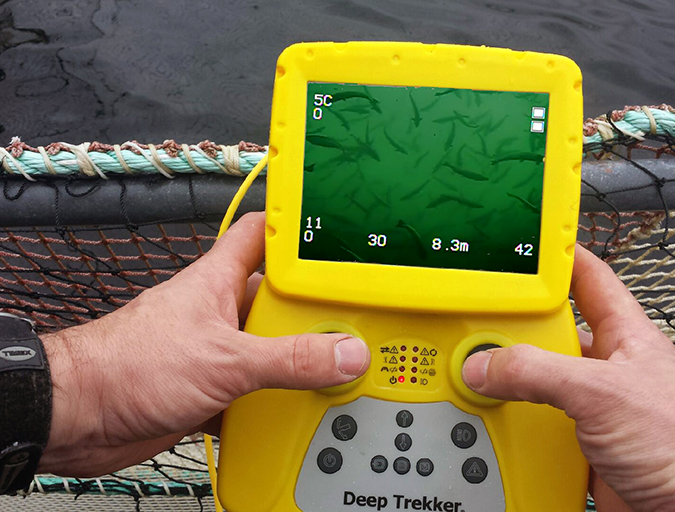
Meanwhile in Norway, scientists at SINTEF Ocean, Scandinavia’s largest independent research organization, are busy developing intelligent technologies – some of which could enable remote operation of farms. Under the ARTIFEX project, an Unmanned Surface Vehicle (USV) is being tested as platform for carrying a ROV for underwater operations, and a Remotely Piloted Aircraft System (RPAS) completes airborne inspection tasks.
“The project will develop technologies for remote operations of sea-based fish farms,” said researcher Per Rundtop. “The main objective is to develop new robot technologies for daily and periodic inspection, maintenance and repair operations remotely controlled from a land-based control center without onsite personnel.”
Also under development is “CageReporter” – autonomous, bio-interactive, and non-tethered vehicles that act as the “mobile eyes” of the farmer and transfer data directly from fish cages to a centralized unit with an operator. If the projects are successful, these potentially game-changing technologies could be introduced commercially and alter fish farm practices – from repairing damaged nets with ROVs and counting sea lice with remote sensors.
“New technology for autonomous systems and remotely controlled operations are needed for more exposed farming,” said Rundtop. “Current state-of-the-art technologies and operations for sea-based aquaculture farms are highly dependent on manual labor and close human interactions with the process and cage structures. Many exposed sites struggle with regularity and planning of operations, such as fish handling and lice treatments. Autonomy and remote control options in auxiliary tools – like ROVs, vessel control and cage-integrated intervention tools – will expand the time window for operations in exposed locations.”
If successful, Rundtop believes these projects could ultimately help farmers undertake daily tasks that may otherwise be neglected under adverse conditions: “One of the main goals is to allow for operations in tougher weather conditions, thus facilitating the use of more remote and exposed sites, and expand the weather window for operations.”
Back in Canada, Realtime Aquaculture has developed an ingenious monitoring technology that delivers real-time data about open-water fish farm conditions (including water temperatures and oxygen levels) directly to a smartphone or web browser.
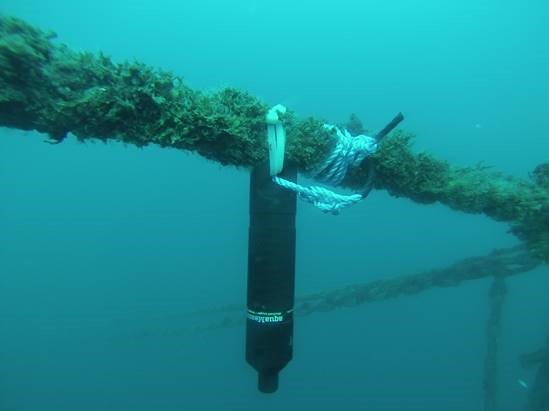
“What’s unique about our technology is that we can perform the monitoring with underwater wireless sensors,” said Brad Rodgers, VP business development at Realtime Aquaculture. “Our sensors are wireless and talk underwater seamlessly. It’s like having a Wi-Fi system that works underwater: Data is collected and stored in the cloud where it can be viewed and analyzed on demand.”
These cable-less sensors can be installed in as little as five minutes, and allow farmers to monitor an entire marine farm site from a single hub. As Rodgers emphasizes, the sensors also provide critical environmental data, allowing farmers to better understand the environment at marine sites, and ultimately, enhance fish health and long term sustainability.
Although robots aren’t taking over the aquaculture world just yet, futuristic farming holds great promise for advancing the industry, as well as for addressing environmental concerns. New tools could lead to improved fish welfare, feeding processes and energy conservation – once the emerging technology is fully developed and adapted commercially.
“Robotics and more advanced technology [are] definitely helping the environment,” said Rundtop. “To date, robotics and ICT have not been widely used for sea-based fish farming, so yet the revolution has not started. But the potential is huge.”
Now that you've reached the end of the article ...
… please consider supporting GSA’s mission to advance responsible seafood practices through education, advocacy and third-party assurances. The Advocate aims to document the evolution of responsible seafood practices and share the expansive knowledge of our vast network of contributors.
By becoming a Global Seafood Alliance member, you’re ensuring that all of the pre-competitive work we do through member benefits, resources and events can continue. Individual membership costs just $50 a year.
Not a GSA member? Join us.
Author
-

Lisa Jackson
Lisa Jackson is a writer based in Toronto, Canada, who covers a range of food and environmental issues. Her work has been featured in Al Jazeera News, The Globe & Mail and The Toronto Star.
Related Posts
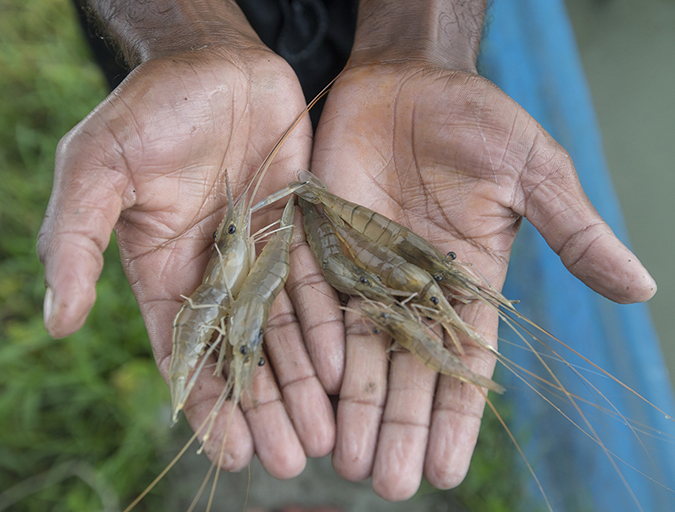
Innovation & Investment
Australia incentivizing innovation in aquaculture
A government-funded $3 million (AUS) project by innovationXchange, WWF and others seeks transformative solutions from entrepreneurs for small-scale producers in the Indo-Pacific region. The competition’s three challenges include fresh thinking on feed, “new ocean products” and sustainable design.
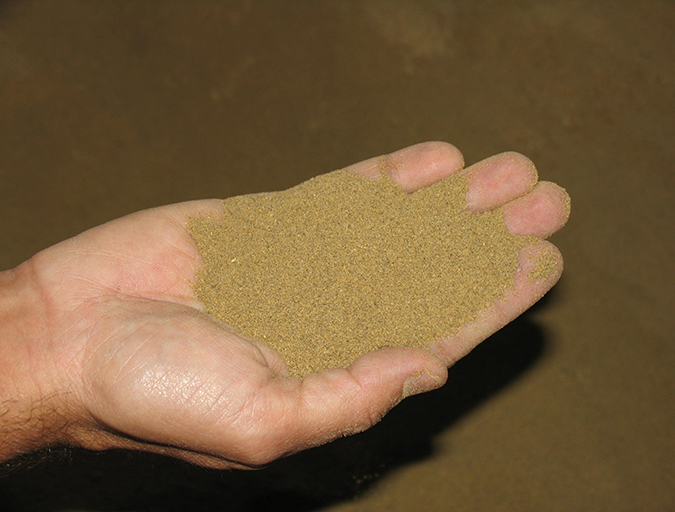
Aquafeeds
A look at the SME controlled extrusion process
A study was conducted using a Twin-Screw Extruder equipped with Specific Mechanical Energy (SME) and Density Control valves, to determine the effect of SME on the water stability of shrimp feeds. Further research is needed to evaluate the performance.
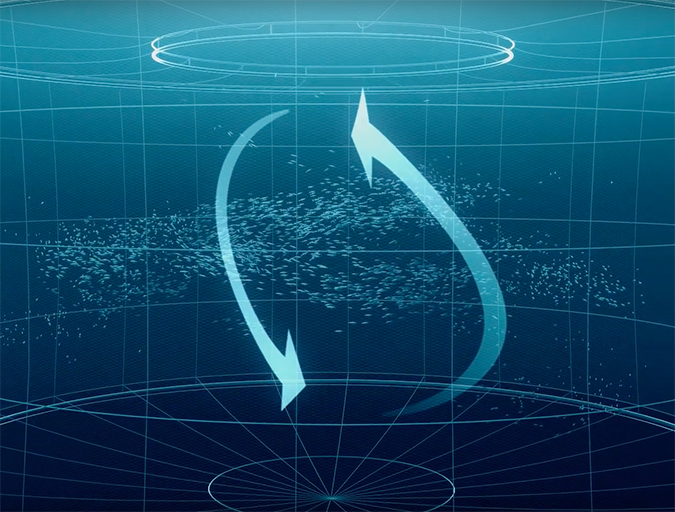
Innovation & Investment
Thinking outside the cage: Avant-garde aquaculture in Norway
Salmon farming in Norway is poised for an innovation boom. The biggest players are putting cutting technology in the water to solve some of the industry’s most persistent problems, such as sea lice, fish escape and waste management.

Innovation & Investment
With oyster nursery, San Diego steps toward aquaculture
The waters off the United States’ eighth-largest city may seem an unlikely place to grow oysters, but in a surprise announcement last month, officials from the Port of San Diego said they’re aiming to do just that.


